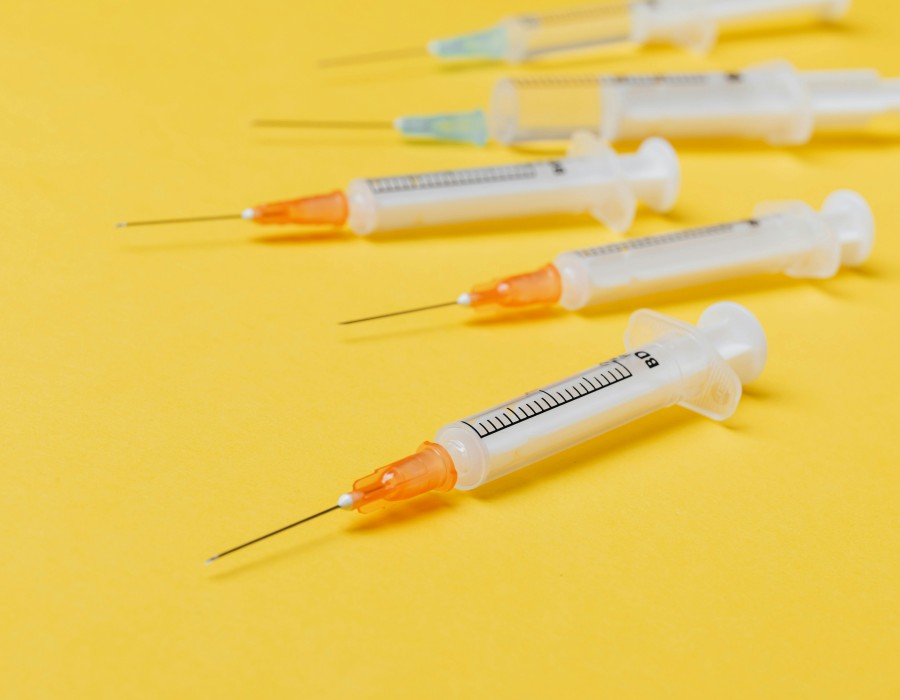Do you suffer from knee pain? Knee pain affects approximately one out of every four Americans over the age of sixty. Knee pain can be caused by a variety of conditions, including arthritis, injury, or overuse, and it can affect people of all ages. Knee injections, in conjunction with other treatment alternatives, have emerged as a particularly effective approach of pain management and mobility enhancement.
Osteoarthritis of the knee is the leading cause of persistent disability in the United States, causing joint deterioration. This illness advances slowly, and the discomfort grows with time. While there is no cure for osteoarthritis, knee joint injections provide a feasible pain management option for those suffering from the illness.
What Is a Knee Injection?
A knee injection involves injecting drugs directly into the knee joint to reduce inflammation and discomfort. Hyaline cartilage, which is rich in hyaluronic acid, covers the ends of the bones in the joints, allowing them to glide smoothly together. This cartilage serves as a lubricant for the joints.
In osteoarthritis, the concentration of hyaluronic acid in the joints declines, causing cartilage destruction. As a result, the bones of the joint rub unnaturally against one another, causing symptoms including pain, stiffness, and edema.
How Do Knee Injections Work?
A drug can be injected directly into the knee joint to alleviate discomfort, enhance mobility, and boost activity levels. The precise treatment strategy will be determined by the individual medicine utilized, with possibilities ranging from a single injection to weekly injections over three to five weeks.
Patients often notice pain relief between 4 to 12 weeks following the injection, and the benefits can linger for many months, with the possibility for repeat injections.
Types of Knee Injections
Various injections can help with arthritic knee discomfort. The available choices include:
- Steroid injections (cortisone shots)
Injecting steroids directly into the knee joint can successfully relieve inflammation while causing fewer adverse effects than using oral steroid drugs. Typically, a numbing chemical called lidocaine is included with the steroid to offer instant pain relief. The combination of the numbing agent and the steroid provides rapid relief. The corticosteroid begins to reduce inflammation within hours. While the length of pain alleviation varies by patient, it might range from several weeks to many months. However, some people may not benefit from the injections.
Steroid injections are typically given no more than once every three months to avoid increasing cartilage degradation, which may aggravate osteoarthritis over time;
- Hyaluronic acid gel injections (viscosupplementation)
The knee joint has a natural material called hyaluronic acid, which lubricates and cushions the joint. This chemical is also found in the skin, eyes, and other bodily organs. Hyaluronic acid gel injections, or viscosupplementation, can restore the body's natural lubrication. This therapy consists of weekly injections straight into the knee joint for three to five weeks. While some patients may experience some pain reduction during the injections, the most significant improvement usually happens 8 to 12 weeks after the therapy begins. The length of pain alleviation varies by individual, with some claiming effects lasting more than six months after injections.
It is crucial to remember that hyaluronic acid injections do not cure all kinds of arthritis in all joints. They have a delayed onset than steroid injections, but they often have less negative effects and can be repeated every six months.
Synthetic hyaluronic acid injections are marketed under many trade names, including Durolane and Euflexxa. The US Food and Drug Administration approved viscosupplementation in 1997;
- Platelet-rich plasma injections
Platelets are microscopic blood cells that are essential for the body's mending process. They are high in growth factors, which help mend damaged tissues. These platelets are carried by blood plasma. Platelet-rich plasma (PRP) is a medical therapy that concentrates platelet cells from the patient's blood to promote healing.
The PRP procedure begins with extracting a sample of the patient's blood, which is then centrifuged to separate its components. This separation concentrates platelets, resulting in platelet-rich plasma (PRP) injections into the knee joint.
Who Benefits From Knee Injections?
Knee injections can be an effective pain management strategy, particularly when other non-invasive therapies such as heat therapy, medicines, or physical therapy fail to provide adequate relief.
These injections may provide relief to people suffering from mild to severe arthritis and chronic knee pain caused by osteoarthritis. However, they may be less beneficial for people with severe osteoarthritis, especially those who are obese. Furthermore, knee injections can alleviate inflammation in afflicted joints.
It's important to understand that, while these injections can help reduce pain, they can't cure arthritis or stimulate cartilage regrowth.






Comments